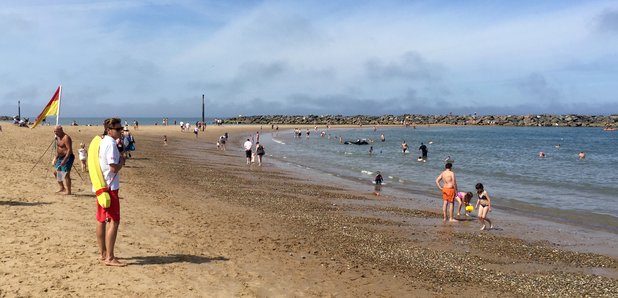
Ben Kentish 10pm - 1am
25 August 2016, 07:44 | Updated: 28 October 2019, 15:53

Hot weather has seen Britons flocking to the beaches - and a number of tragic deaths occurring. Frequently rip-tides are the cause. Here’s what to do to avoid danger when enjoying a swim in the sea.
What is a rip tide? Rip-tide or rip-currents are bands of water that can pull people out to sea. They occur when the force of the waves coming into the shore takes the path of least resistance and flow back out to sea.
How do I spot them? Areas with a rip tide frequently appear like the calmest and most enticing place to swim. Less wave activity in the area or smaller choppier waves can frequently signify and underlying rip tide. They can often churn up sand from the sea floor so a patch of sea that is a different colour from the rest can be an indicator. Experts advise spending 5-10 minutes observing the water before you enter to sort the tell tale signs of a rip channel and follow instructions from any lifeguards in attendance.
What do I do if I’m caught?
Do not panic. Float and try and signal that you are in danger by raising your arms and shouting. Rip tides will eventually dissipate and normally only flow until about 50-100 feet out to sea. Save energy for the swim back to shore.
Don’t swim against the tide.
Most deaths in rip tides are caused by swimmers exhausting themselves trying to swim against the tide. Rip tides are scary but won’t kill you, just drag you away from sure. Focus on remaining afloat.
Swim parallel to the shore.
Rip tides are frequently 20-100 feet wide and you can escape them if you swim perpendicular from the the direction of the tide. Once out of the tide, the waves may aid you getting back to shore.